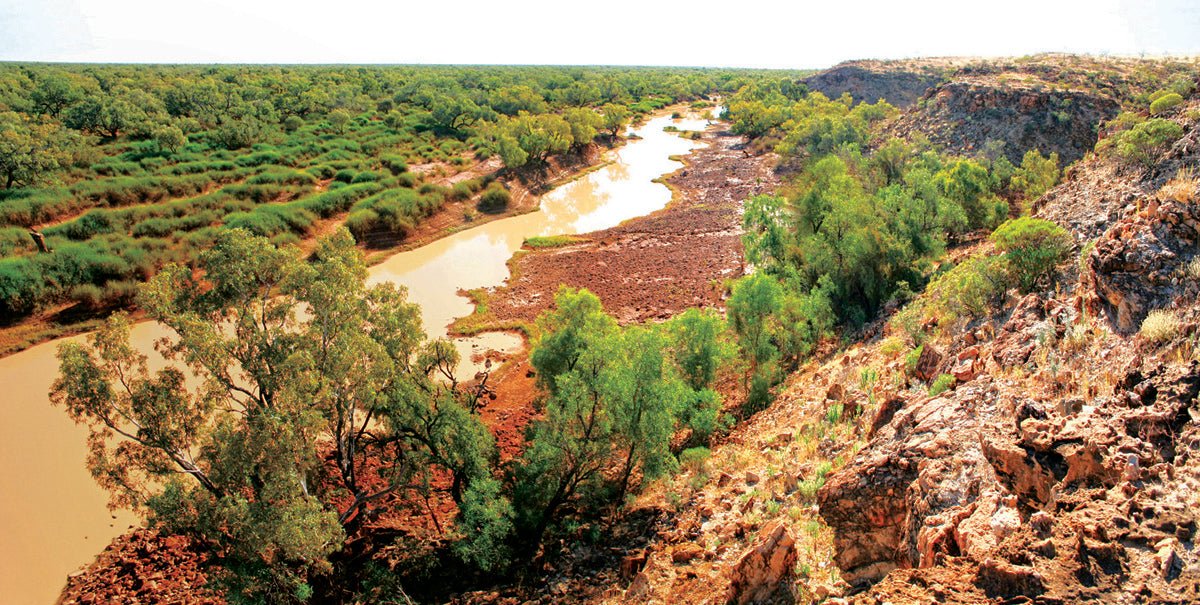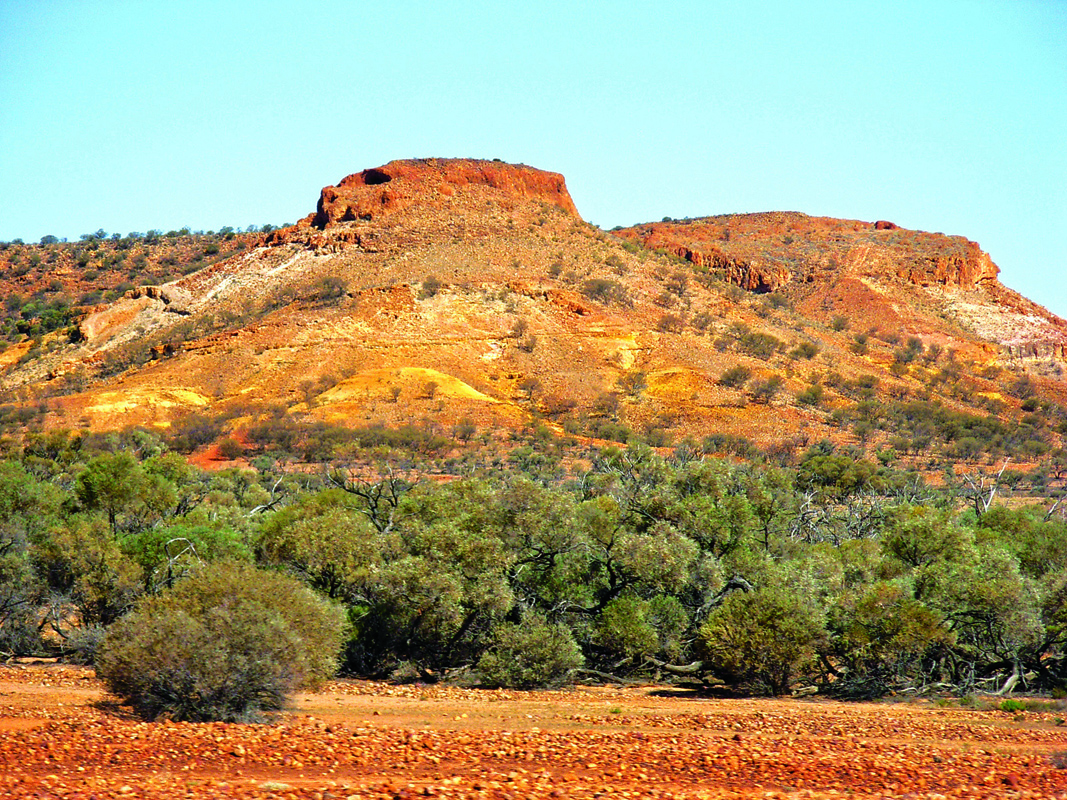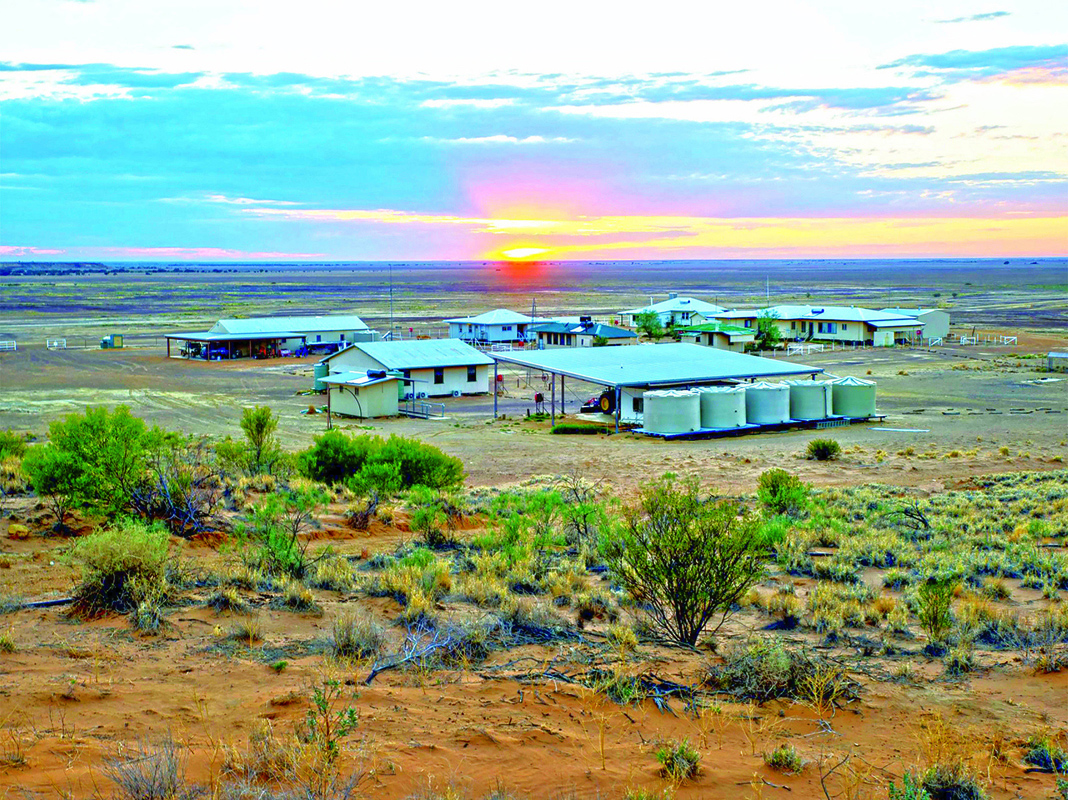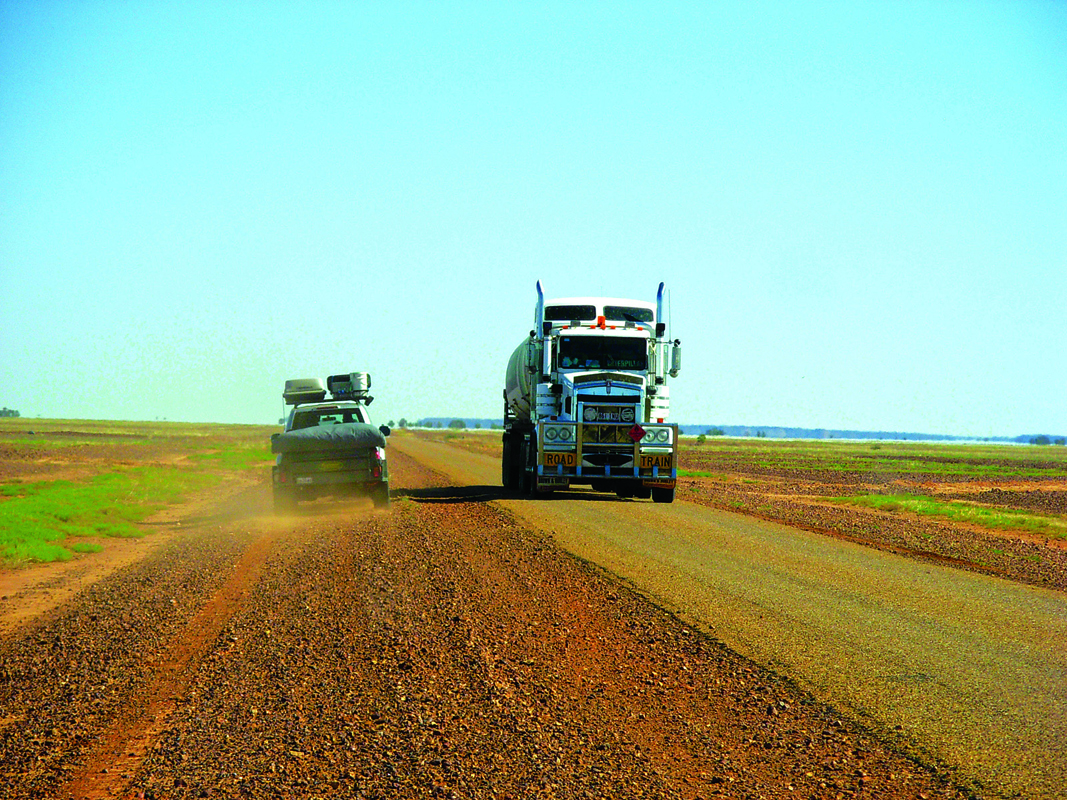A Diamond in the Rough

Channel Country is one of the hottest, driest places in Australia. It's a vast arid landscape of gibber plains, dunefields and low stony hills stretching from one horizon to the other under a wide, blue sky. This almost-desert embraces three ephemeral rivers — the Georgina, the Diamantina and Cooper Creek — that pulse in a boom-and-bust cycle of flood and drought driven by the fickle rains.
The Diamantina was named in 1866 by explorer William Landsborough to honour Lady Diamantina Bowen, wife of Sir George Bowen, the first Governor of Queensland. Today, it flows through a 507,000 hectare national park, formerly the ‘Diamantina Lakes’ cattle station, which is one of Queensland’s largest and most important conservation areas.
All aspects of life in this remote region are dominated by its extreme climate. In summer, daytime temperatures often soar above 45 degrees, while winter nights may plunge below zero. Though usually concentrated in the summer months, rainfall is unpredictable and highly erratic, averaging a meagre 150–250mm.
The Maiawali and Karuwali Indigenous people roamed this country for more than 20,000 years before white settlement. They understood its secrets and were sustained by its natural bounty in harmony with the seasons.
The rains filled waterholes and wetlands that harboured myriad birds and abundant fish; swollen rivers flooded the plains, transforming them into a sea of lush grass and succulent herbage on which native animals grazed. In these times of plenty, the clans came in large numbers to hunt and gather and to congregate for ceremonies, law-making and renewal of spirit.
The Diamantina River was a Dreaming pathway and provided a natural north-south trade route, connecting tribes in far-flung lands through commerce in weapons and shields, pituri (native tobacco) and seashells, rocks for tools and ochre for decoration. Not only tangible wares, but stories, songs and traditional wisdom were exchanged.
As the season cycled to dry, the Indigenous peoples dispersed into smaller groups to forage across the desiccated plains where food was sparse and water was confined to hidden wells, soaks and springs. Their arcane knowledge of the land was key to their survival in these difficult times.
 Ancient landforms are a striking feature of the Channel Country
Ancient landforms are a striking feature of the Channel Country
By the 1890s, Indigenous peoples had been largely displaced from the Diamantina area by European pastoralists, sometimes being forcibly removed to distant government-run settlements. Those who remained were assimilated into the pastoral industry where their bush skills and local knowledge were central to its success.
The park contains several sites of cultural and spiritual significance to the Maiawali and Karuwali, such as Hunters Gorge, Lake Constance and Warracoota Waterhole. These are accessible to visitors and it’s important to treat them with respect. Material evidence of their ancestors’ occupation also exists in the form of fish traps, paintings, burial sites, hearths, rock shelters and scarred trees. This strong spiritual and physical connection with Country supports a native title claim that includes all of the national park.
The ill-fated Burke and Wills expedition traversed the Diamantina heartland in 1860 but, in his haste to reach the Gulf and return, Burke recorded very little of his journey here. During 1861–62, government-sponsored search parties led by Alfred Howitt, John McKinlay and William Landsborough found John King but no other survivors of the lost expedition. However, their explorations revealed extensive grasslands and natural waterholes that raised the possibility of rich grazing in the Diamantina catchment.
A run of good seasons in the 1870s sparked a push by pastoralists into the region for the prime cattle-fattening quality of its Mitchell grass. John Costello and his brother-in-law Patsy Durack claimed vast leases stretching from the South Australian border across the Diamantina into Central Queensland. Nat Buchanan pioneered stock routes to the west and drove thousands of cattle that way to establish stations in the Top End and the Kimberley.
Small towns sprang up in the wake of the pastoral settlers — Winton and Boulia (both in 1879), Camooweal (1884) and Birdsville in 1885.
 Diamantina Homestead is the Ranger Headquarters (Outback Pics, Longreach)
Diamantina Homestead is the Ranger Headquarters (Outback Pics, Longreach)
Diamantina Lakes Station was established in 1876 when John Macartney and Hugh Heber-Percy took up a 2500sqkm pastoral lease on the Diamantina River, with frontages on the Mayne River and Spring Creek. When Sidney Kidman acquired the property in 1908, along with others in the region, it occupied more than half a million hectares and was capable of carrying up to 12,000 head of cattle. Kidman shrewdly used his Channel Country landholdings to spell and fatten cattle on their way to southern markets.
However, sustained drought between 1914 and 1916 claimed thousands of stock, forcing Kidman to sell the station. After passing through several owners, the property was eventually purchased by the Queensland government in 1992 and gazetted as the Diamantina National Park.
Remnants of this bygone era may still be seen in the park. The QPWS ranger base is housed in the former Diamantina Lakes Homestead complex. Forty kilometres to the north, on Diamantina Lakes/Winton Road, are the ruins of the Mayne Hotel, a popular watering hole for travellers, stockmen and opal miners from 1888 to 1951.
Historic attractions are also incorporated in the 90km Warracoota Circuit Drive: steel yards built in the 1980s that are still used by drovers moving stock along the Springvale Road stock route; the heavy-duty Bronco Yards, built to withstand bucking horses and fractious cattle; and a crumbling stone pioneer’s hut and other structures near Warracoota Waterhole.
On the Springvale Road route, a fine example of skilled bush craft may be seen at the Gum Hole Yards made entirely from local gidgee and coolibah wood. Nearby, an old tin shed and some discarded items are all that remain of a makeshift camp where stockmen ate and slept after mustering and yarding livestock. Twenty-two registered graves in the park date from 1844 to 1944.
 Road trains have right of way out here
Road trains have right of way out here
FAST FACTS AND CONTACTS
- Where: 350km north-west of Windorah, 260km east of Bedourie, 290km south-west of Winton
- When: Best time to visit is March–October
- How: All access roads to and within the park are unsealed and often impassable in wet conditions; suitable only for 4WD vehicles and high clearance vans and trailers
- What: Indigenous culture, pastoral history, birdwatching, fishing, canoeing, scenic driving, sightseeing, bush camping
- Stay: Hunters Gorge and Gum Hole campgrounds; toilets only; camping permits required — $6.65 per person per night, or $26.60 per family per night
- Bring: Be self-sufficient, bring lots of water and extra fuel. All supplies are available at the nearest towns
QUEENSLAND PARKS & WILDLIFE SERVICE
Ranger, Diamantina National Park
P: (07) 4657 3024
UHF Channel 29
W: parks.des.qld.gov.au/parks/diamantina
FOR MORE INFORMATION ON ROAD CONDITIONS CONTACT:
Queensland Transport
P: 13 19 40 for 24-hour road reports
W: 131940.qld.gov.au







